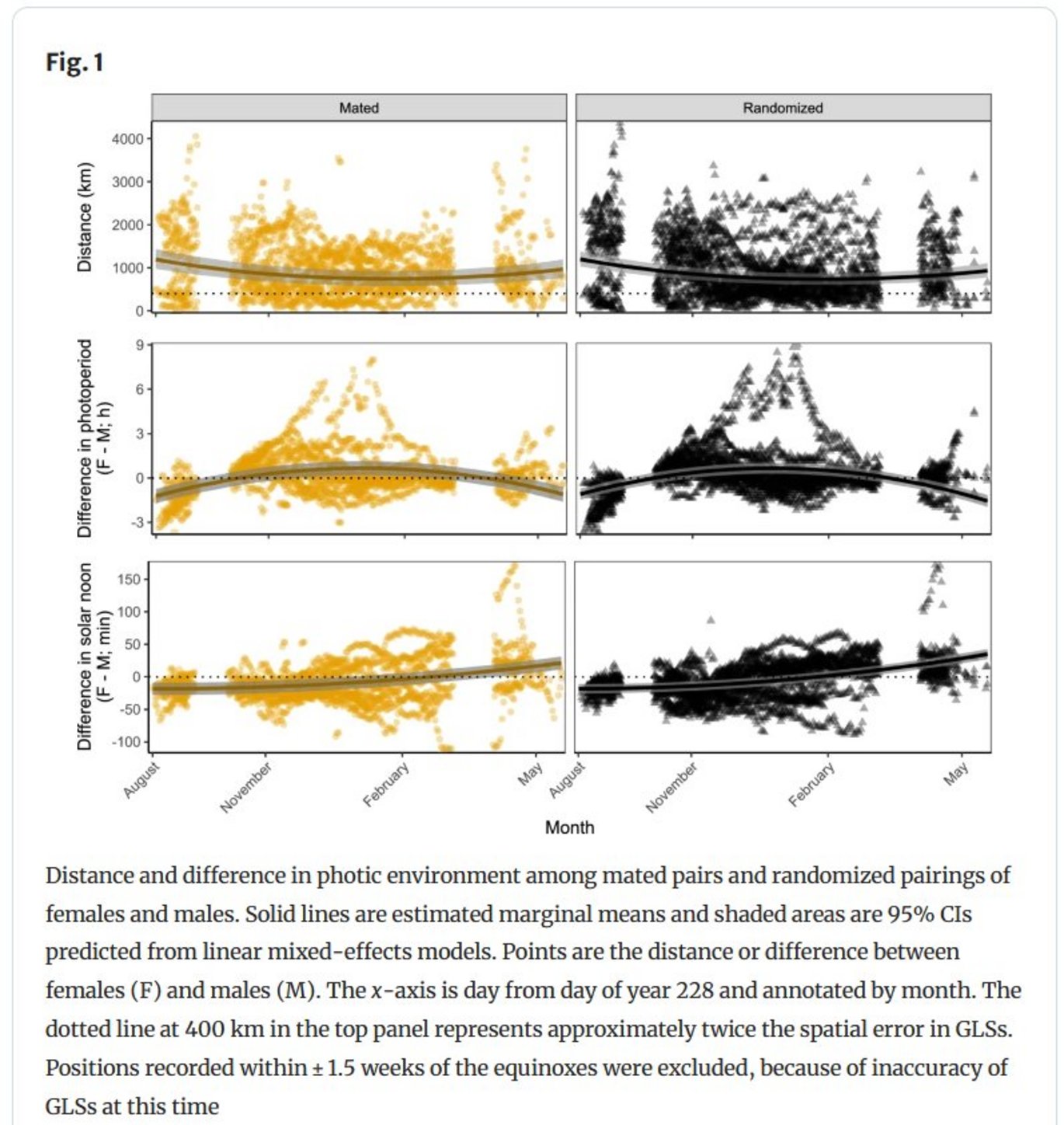Thick-billed Murres in breeding pairs migrate and overwinter far apart but in similar photic environments
New publication by Huffeldt NP, Ballesteros M, Helm B, Linnebjerg JF, Merkel FR, Mosbech A et al. Thick-billed Murres in breeding pairs migrate and overwinter far apart but in similar photic environments. Journal of Ornithology. 2024. doi: 10.1007/s10336-024-02176-x

Abstract:
Scheduling between mates in species with long-term pair bonds can be essential for positive fitness. The annual cycle in photoperiod is the primary environmental cue used by many animals to synchronize behavior and physiology among members of a population, and animals that migrate must have similar annual schedules to ensure successful breeding. However, we know little about whether members of mated pairs in migratory species experience similar photic environments across the year, which could allow for synchronization in annual phenology. Here, we used light-based geolocation to estimate positions of mated pairs of Thick-billed Murres (Uria lomvia, a seabird a.k.a. Brünnich’s Guillemot) which bred above the northern polar circle in Greenland. We tested the hypothesis that individuals in mated pairs occur in more similar locations and photic environments than randomly matched females and males. We found no difference in the amount of spatial separation or in the photic environment between mates and randomized heterosexual pairings. In general, the distance between females and males ranged from 1,198.5 km during August to 737.4 km during January. The sexes remained in photic environments with highly correlated photoperiods and moderately correlated times of solar noon in UTC. The spatial separation of, but similar photic environments experienced by, female and male murres regardless of pair status is probably adaptive by facilitating the synchronization of annual schedules between sexes, while allowing individuals in mated pairs the freedom to pursue the best foraging opportunities during migration and overwintering independent of their mate.
